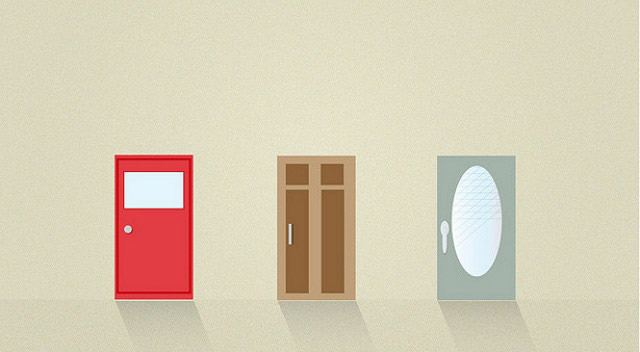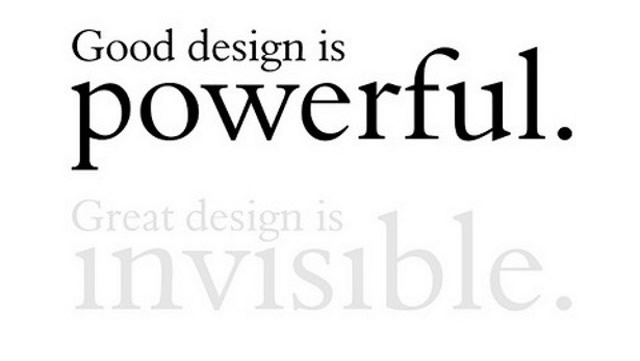Website design is a complex process.
When I say “complex,” I’m not just referring to the design and development part. Overall, the thought process and the decision taking stages are complex as well. Thus, right from inception to implementation, getting a website up and running is no piece of cake, especially if you are the type of designer or developer who likes to put his or her heart and soul into a project.
So, how do you arrive at a user-centric website design model? The user-first approach is not something that can be accomplished by accident. In general, it requires meticulous planning and deep thinking, as well as constant feedback from multiple sources. As a result, at times even the best designers and developers produce sites lacking a user-centric approach.
The question that should, as a result, be asked is: how can this be avoided? In this article, we shall attempt to answer that question.
The Desire To Be Awesome
Most of the time, it all starts with just that — designers work hard in their bid to create a super-awesome website. “I’d like my website to be cool and awesome!” — you know how it goes!
Often, many designers and developers somehow do not understand the fact that the particular “cool” element may not be needed, or even worse, possible in their case.

Image Source
This does not apply only to website design: in my freelance career as a developer of mobile apps as well as a photographer, I’ve noticed that everyone keeps looking for that “cool” element. You’ve seen a mobile app with funky animations, you will do anything to get that animation in your own app, even if it is not needed and/or necessary!
Similarly, when it comes to website design, people keep looking for elements they consider cool and awesome. However, you have to wonder: are such extravagant efforts really necessary?
The point is, that we design websites in order to make life easier for the end user. If our website looks good, but has certain annoying features that turn away visitors and potential customers, the project has failed. People on the internet have short attention spans and if you fail to get the first impression right, you probably will not be given a chance to cast a second impression anyway.
One example I keep citing nowadays is that of CounterPunch. Take a look at the website — the design looks unimpressive, and the logo, though acceptable, is nothing extraordinary.

Overall, there is not much in the design itself that a designer could brag about. However, the website continues to thrive for two reasons:
- The content is awesome.
- The design, though unimpressive, serves its visitors well. The website has a target audience of folks who are politically enthusiastic and technologically neutral and thus, the below par website design does not hinder or interfere with their reading.
In other words, CounterPunch does not have a beautiful website, but it does have a user-centric design, and that drives it home.
So, what does one do? Obviously, the example of CounterPunch cannot be followed literally — that is, good traffic is not a justification for bad website design. The key note here is that user-centric design can make up for your otherwise simple web design.
To sum it up in one statement: Do not sacrifice user experience for the sake of beautiful design.
Questions To Be Asked
When designing a website, you should often ask yourself:
- Who (or what) is the website about?
- What does the website do?
- How do I get it done?
The first one is self-explanatory: you cannot launch a website unless you are fully aware of the target audience. If you have no idea about the target demographic, both your design and the content will only be mere guesswork, and you obviously cannot get lucky with guesses all the time.
The second question, of course, deals straight with our subject here: user-centric web design. It goes without saying that unless you know the purpose and aim of the project you’ve taken up, you cannot accomplish it with full perfection. Naturally, you need to have aims and goals in order to meet them. Thus, asking yourself the question about the website’s aims and goals helps you prioritize them properly as well as ensures that the end product does not stray from the said aims.
Lastly, the getting-it-done part. This third question is strictly for the creators of the website; however, the manner in which you answer it goes a long way in determining the reception your website is likely to get from the end users. Why? Simply because all said and done, when someone visits your website, he or she will ask the first two questions (albeit from a visitor’s perspective), but the third one remains entirely yours to figure out and answer.
There are a million ways in which you can get the website up and running, however, the only key point worth noting is that by the time you should come to the third question, you should be certain that you have satisfactory answers for the first two ones.
Decisions To Be Made
Generally, decisions related to web design are made on the basis of aesthetics and visual appeal. While this definitely is correct to a great degree, it all boils down to one thing: whose visual choice, and whose sense of aesthetics?
Again, user-centric design means that you take into consideration the preferences of your users. It is easy to fall prey to the temptation of choosing good website looks over efficiency, and to make it even worse, “efficiency” itself has multiple definitions. Your version of efficiency may be different from those of your visitors, and vice versa. A good move, in that case, is to conduct a mini-survey, or a poll, thereby getting to know what your visitors exactly think.
The purpose of getting visitors’ feedback is to ensure that the website does not stray from its main purpose of serving the visitors. Agreed, there may be certain points in the feedback which may seem to leave you unhappy — but just remember, “the customer is always right.”
Commitments To Be Fulfilled
As a designer or developer, you have automatically signed an unofficial commitment towards creating a website that serves its visitors well. Therein lies the irony: you design a website, you are amazed by its beauty, and you fall in love with it. However, your visitors generally do not visit the website to be amazed by the beauty — instead, they come there looking for the information they want. Sure, if the design is good, they will probably be impressed, maybe even leave a word or two of appreciation, but at the end of the day, all they are looking for is the information that interests them. If the web design helps them locate that particular information, they may or may not praise it. But if the web design makes it difficult for them to get that information, they will surely criticize it.
Consider, for example, the case of showing videos on the homepage. If the video is unobtrusive, it will be viewed by those who are interested. The ones who are not interested in the video, will not step up and thank you outright for making it non-obtrusive.
However, if the video is such that it takes up the full page and keeps popping up on every second page (even worse: plays automatically), your visitors will be annoyed beyond limits (rightfully so, I must add), and will most likely leave your website in an instant.
The bottom-line, therefore, is the fact that your users expect your website to do well in terms of being user-friendly, and you should try your best to meet than expectation. After all, a website can be called good only if it proves to be useful for the users, right?
Final Words
Any website reflects its owner’s identity, as well as the designer’s ability. It is, therefore, only natural that proper care is taken to ensure that such reflection is exactly the way we want it to be. A user-centric web design shows that the website owners care about their customers. Beyond that, it also testifies to the fact that the designer cares about his or her work.
As a result, if you wish to really make your web design a successful entity, you must ensure that the experience it provides to the users is par excellence — this includes the overall experience consisting of both visual elements as well as the relevance of your content. Once your website is able to meet the needs of your users, it will not be long before potential customers become loyal customers.
Related Topics
Top


